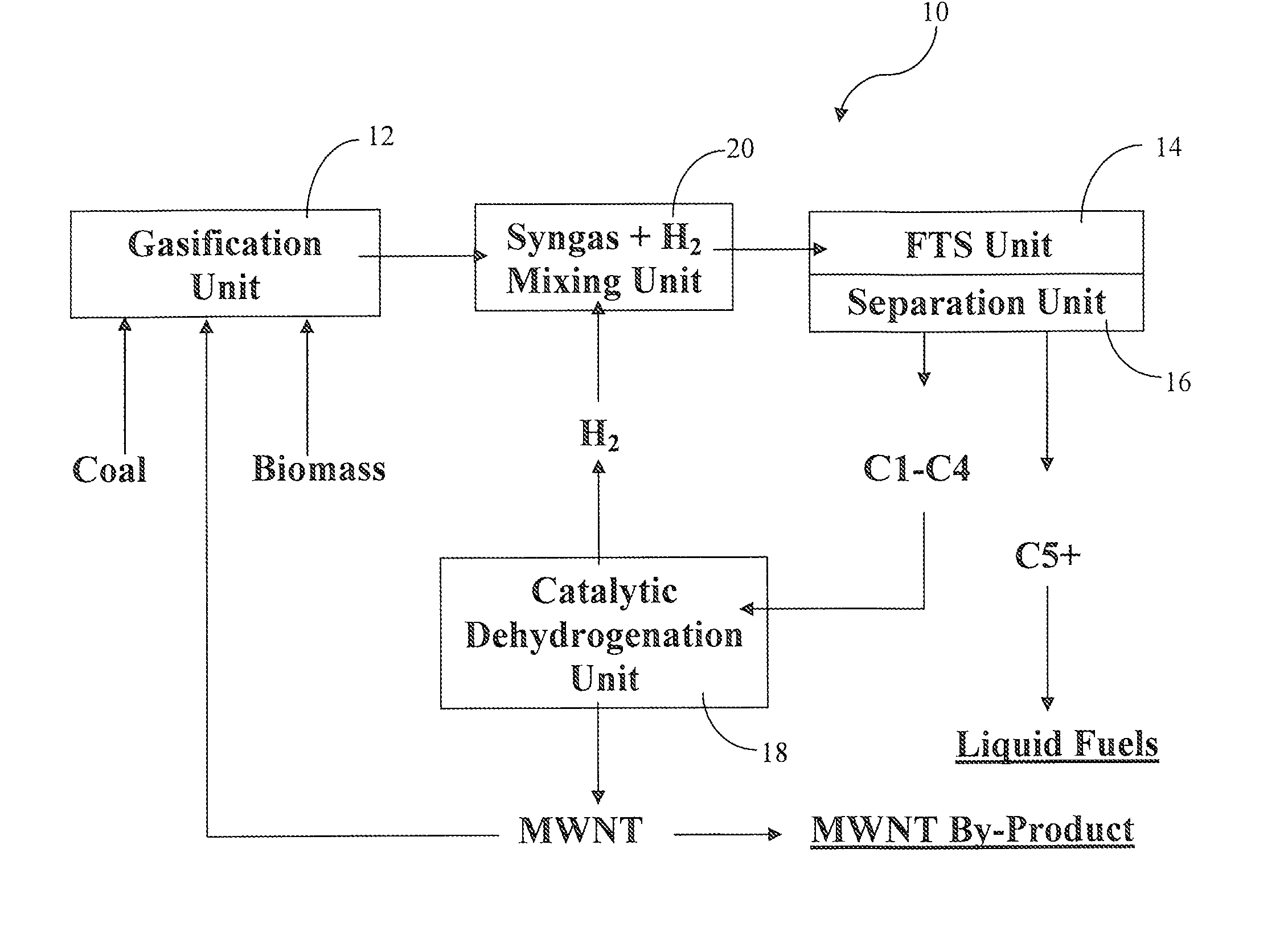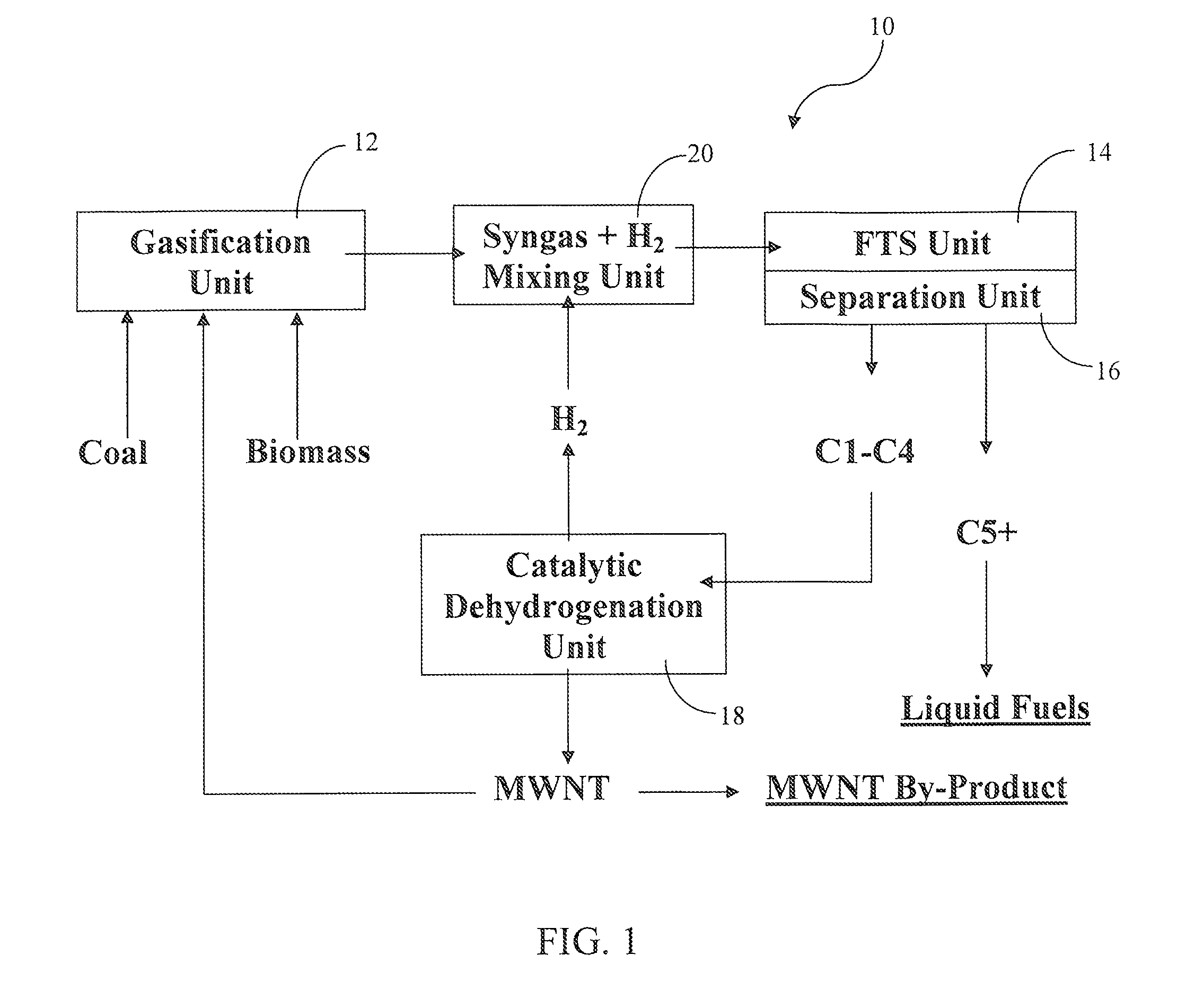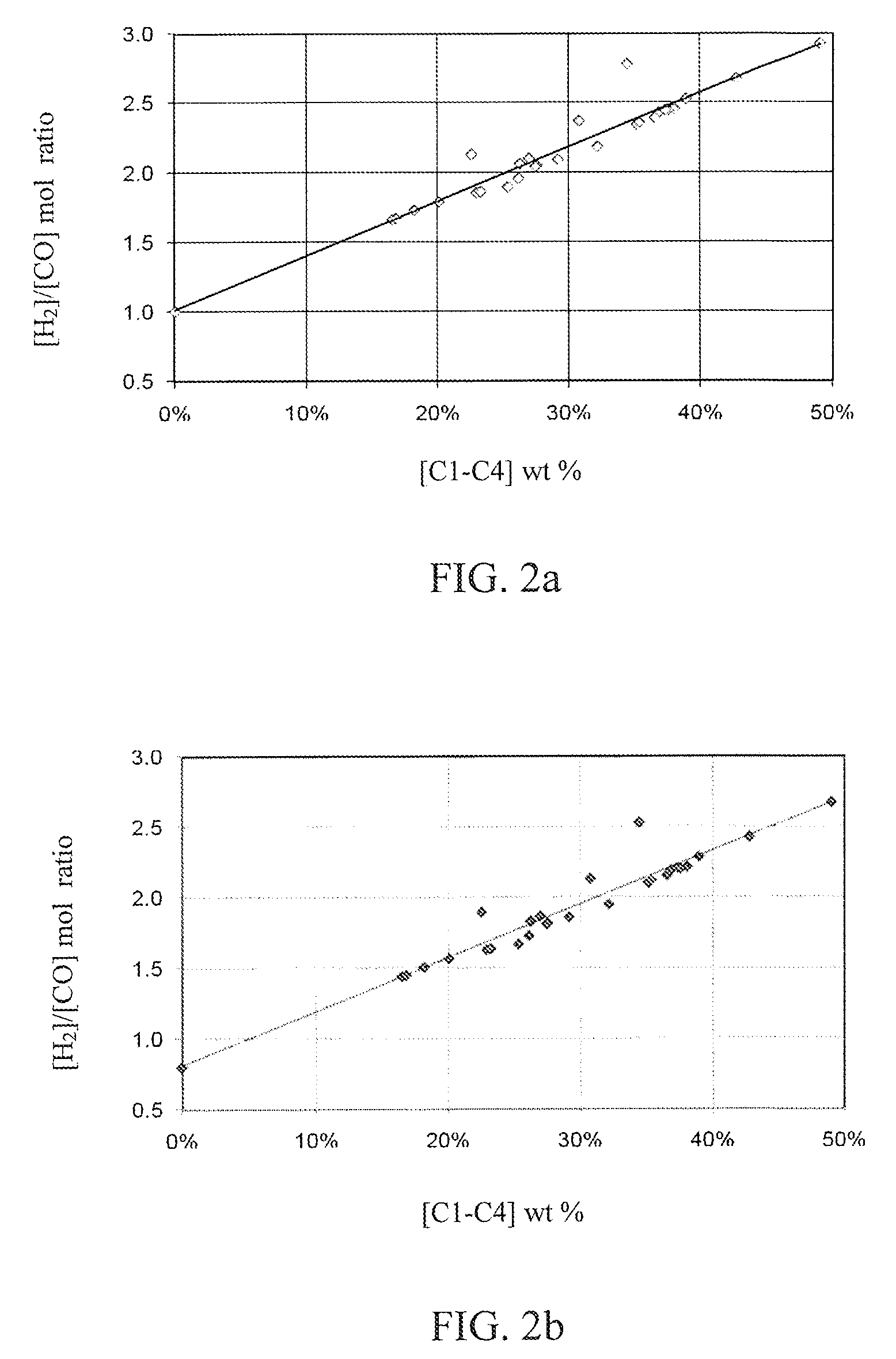Incorporation of catalytic dehydrogenation into Fischer-Tropsch synthesis to lower carbon dioxide emissions
a technology of catalytic dehydrogenation and fischer-tropsch, which is applied in the preparation of oxygen-containing compounds, organic chemistry, chemistry apparatus and processes, etc., can solve the problems of increasing the cost of carbon dioxide capture and storage, largely untested, and causing significant cost to the synthetic fuel production process
- Summary
- Abstract
- Description
- Claims
- Application Information
AI Technical Summary
Benefits of technology
Problems solved by technology
Method used
Image
Examples
Embodiment Construction
[0014]Reference is now made to FIG. 1 schematically illustrating a liquid fuel production facility 10 for performing the method of the present invention. The liquid fuel production facility 10 comprises: (a) a gasification unit 12, (b) a Fischer-Tropsch Synthesis (FTS) unit 14 downstream from the gasification unit 12, (c) an optional hydrocarbon separation unit 16 downstream from the FTS unit 14, (d) a catalytic dehydrogenation unit 18 downstream from the FTS unit or optional separation unit and (e) a mixing unit 20 downstream from the gasification unit and the catalytic dehydrogenation unit. The optional hydrocarbon separation unit 16 is provided when appropriate hydrocarbon separation is not completed within the FTS unit.
[0015]More specifically, feed stock including coal, biomass, carbon nanotubes and mixtures thereof is fed into the gasification unit 12 where the feed stock or starting material is gasified at a relatively high temperature and pressure to produce a syngas or synth...
PUM
| Property | Measurement | Unit |
|---|---|---|
| weight percent | aaaaa | aaaaa |
| weight percent | aaaaa | aaaaa |
| temperatures | aaaaa | aaaaa |
Abstract
Description
Claims
Application Information
 Login to View More
Login to View More - R&D
- Intellectual Property
- Life Sciences
- Materials
- Tech Scout
- Unparalleled Data Quality
- Higher Quality Content
- 60% Fewer Hallucinations
Browse by: Latest US Patents, China's latest patents, Technical Efficacy Thesaurus, Application Domain, Technology Topic, Popular Technical Reports.
© 2025 PatSnap. All rights reserved.Legal|Privacy policy|Modern Slavery Act Transparency Statement|Sitemap|About US| Contact US: help@patsnap.com



